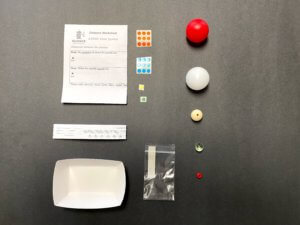Description
Lesson Overview
Students will:
- Review of what is in our Solar System a model of planet relative sizes
- Construct a relative distance model of the Solar System
- Discuss the strengths and weaknesses of these models
- Use the models they created as a basis for asking and thinking about other questions
Lesson Objectives
Students will:
- Use provided data to build a relative distance model of the solar system
- Identify the strengths and weaknesses of two different models used to represent the solar system
This lesson is aligned with these Next Generation Science (NGS) Standards.









